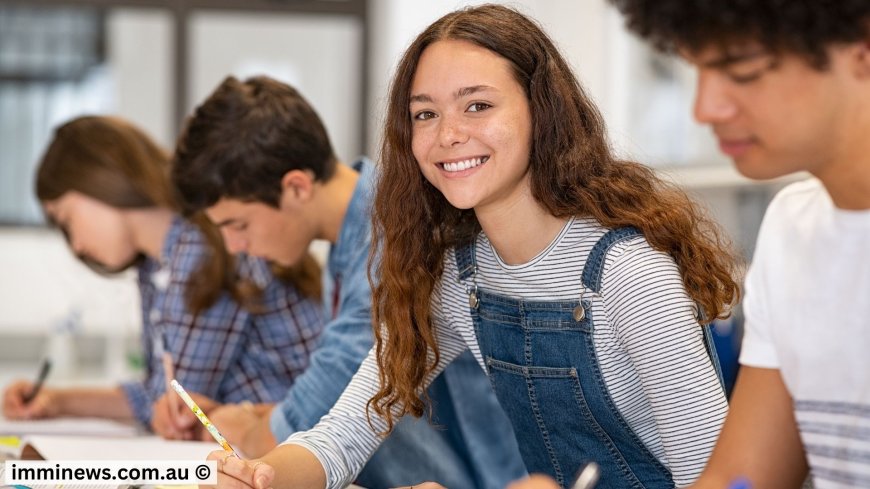Australia's Offshore Student Visa Grants Must Rise in 2025
Explore why 2025 offshore student visa grants must increase to meet new caps and how policy changes could impact higher education and VET enrolments in Australia.

The introduction of student visa caps for 2025 has sparked widespread concern, with many questioning the government's policy. These caps have not only triggered a wave of media frenzy but also raised doubts about their effectiveness in managing Australia's international student intake. This structured overview outlines the key factors influencing offshore student visa grants and why a rise is necessary to meet the government's proposed student caps.
Overview of 2025 Student Visa Caps
Recent student visa caps apply to new students entering Australia's higher education and vocational education and training (VET) sectors in 2025. These caps do not affect current students in 2024, as long as they remain with the same educational provider in 2025. In the higher education sector alone, there were 399,427 enrolled students as of May 2024, and that number is expected to have increased by July 2024 due to a large influx of new students.
However, for the 2025 caps to be met, the government will need to significantly increase offshore student visa applications and approvals. This is especially relevant given the current gaps between visa applications and actual grants, which are falling short of expected targets. Without policy adjustments, these caps may be impossible to achieve.
Breakdown of the Proposed Caps
- Higher Education: The 2025 cap is set at 175,000 students, up from 154,660 new commencements in 2023. This number includes private institutions but excludes post-graduate research students.
- VET: The cap for 2025 is 90,000 students, compared to 81,643 new commencements in 2023, which was a record year for VET enrollments.
Factors Contributing to the Caps
The higher caps for 2025 are a result of several data discrepancies between the Department of Home Affairs (DHA) and the Department of Education (DoE). For instance, the DHA counts visas granted for packaged courses (like English language plus higher education) under higher education, while the DoE records them under English Language Intensive Courses for Overseas Students (ELICOS). This misalignment in data categorization impacts the overall visa count and creates confusion when comparing commencement figures across sectors.
In addition, the 2025 cap includes students who transfer between sectors—whether from VET to higher education, or from another visa type (like visitor visas) to a student visa—adding to the complexity of predicting exact numbers.
Higher Education Sector Challenges
To reach the proposed cap of 175,000 students in higher education, several hurdles must be addressed:
- Transfers Between Providers: In 2023, 5,289 students transferred to higher education from other sectors, including VET and ELICOS, contributing to the overall commencements. However, transfers alone are unlikely to close the gap between the 2023 commencements (154,660) and the 2025 cap.
- Offshore Visa Grants: As of July 2024, the number of primary offshore student visa grants for higher education had dropped to 98,436, compared to 132,402 at the same point in 2023. This 34,000-visa shortfall is expected to widen without policy changes, making it difficult for the sector to meet its 2025 target.
VET Sector Struggles
The VET sector faces even greater challenges in meeting its cap of 90,000 students in 2025:
- Decline in Offshore Visa Grants: Offshore VET student visa grants have dropped sharply, from 22,342 in the first half of 2023 to just 5,984 in the same period in 2024.
- Onshore Restrictions: New restrictions on onshore student visa applications, including the inability for visitors to switch to student visas after July 2024, will further limit the sector's ability to meet the cap.
- Transfer Students: In 2023, 24,448 students transferred to VET from other sectors, but this figure alone is unlikely to be enough to meet the 2025 target. Additionally, the tightening of visa policies makes it harder for VET providers to recruit from higher education institutions.
Policy Implications
Without significant changes to student visa policies, the sectoral caps for both higher education and VET are unlikely to be met. These caps were introduced in response to the rapid growth in international student numbers during 2022-2023, which overwhelmed the system and left many students in a state of uncertainty. However, the current policy settings could have the opposite effect in 2025, reducing the number of students far below the cap.
In conclusion, the student visa caps for 2025 present a significant policy challenge. To ensure these caps are met, the government will need to reconsider its visa processing policies and address the current shortfalls in offshore student visa grants.
Failing to do so could lead to unintended consequences, such as a reduction in net migration and ongoing uncertainty for students already in Australia. The caps themselves may ultimately prove to be an ineffective tool for managing Australia's international student intake, requiring a more nuanced and flexible approach.
Tags:
What's Your Reaction?
 Like
0
Like
0
 Dislike
0
Dislike
0
 Love
0
Love
0
 Funny
0
Funny
0
 Angry
0
Angry
0
 Sad
0
Sad
0
 Wow
0
Wow
0







































































































